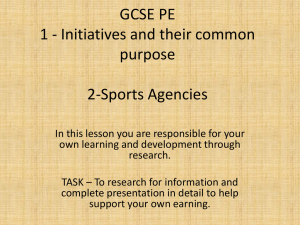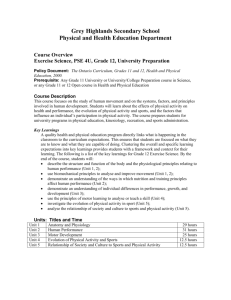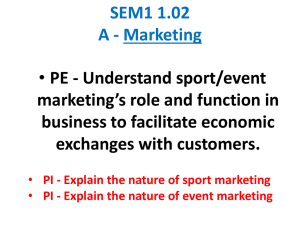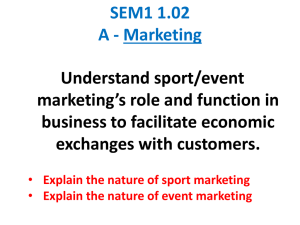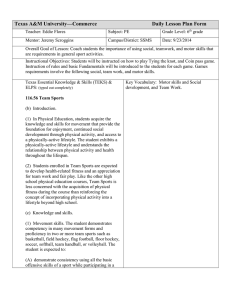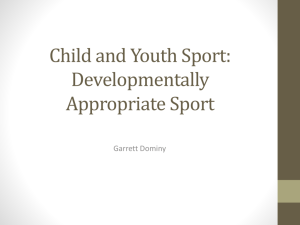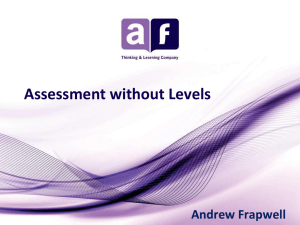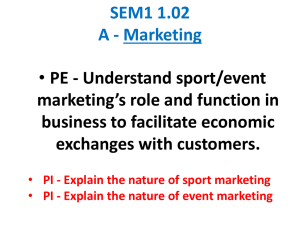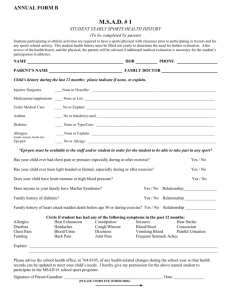Year 10 GCSE PE TEST 1 Answers
advertisement
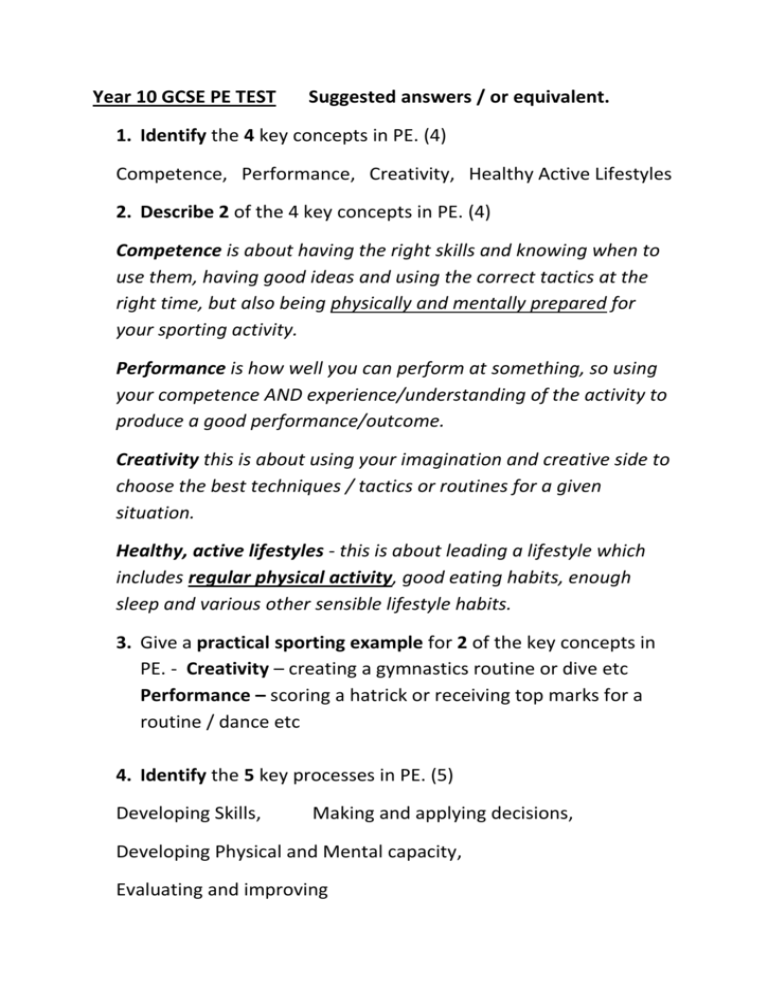
Year 10 GCSE PE TEST Suggested answers / or equivalent. 1. Identify the 4 key concepts in PE. (4) Competence, Performance, Creativity, Healthy Active Lifestyles 2. Describe 2 of the 4 key concepts in PE. (4) Competence is about having the right skills and knowing when to use them, having good ideas and using the correct tactics at the right time, but also being physically and mentally prepared for your sporting activity. Performance is how well you can perform at something, so using your competence AND experience/understanding of the activity to produce a good performance/outcome. Creativity this is about using your imagination and creative side to choose the best techniques / tactics or routines for a given situation. Healthy, active lifestyles - this is about leading a lifestyle which includes regular physical activity, good eating habits, enough sleep and various other sensible lifestyle habits. 3. Give a practical sporting example for 2 of the key concepts in PE. - Creativity – creating a gymnastics routine or dive etc Performance – scoring a hatrick or receiving top marks for a routine / dance etc 4. Identify the 5 key processes in PE. (5) Developing Skills, Making and applying decisions, Developing Physical and Mental capacity, Evaluating and improving Making informed choices about leading a healthy and active lifestyle 5. Describe 2 of the 5 key processes (4) 5 below describe 5 above Develop a wide range of skills, showing control and fluency. Make decisions about - tactics in different sports situations, analyse your own and others sports performances and, identify hazards and implement risk assessment (make things safer) Developing physical strength, stamina, speed and flexibility, but also mental strength and confidence. Know how to evaluate and improve areas in your own and others performance. Choosing and participating in activities that will benefit your health. 6. Give a practical sporting example for 2 of the 5 key processes. (4) Lay up in Basketball for 1 above. Any healthy physical pursuit / training (yoga etc) for 5 above. 7. What is a ‘fundamental motor skill’? (1) These are basic skills that provide the basis for other skills. 8. Identify the main fundamental motor skills you know of. (5) Running, throwing, kicking, jumping and hitting (catching) 9. In what ways might fundamental motor skills be analysed and assessed / measured? (2) Analysed by assessing technique and style factors and measured usually by timing, measuring distance achieved, accuracy / consistency etc 10 . Explain how you would analyse and measure the performance of the fundamental motor skills of running and throwing. (4) We would observe and analyse each by looking at technique/ style - by looking at things like arm and leg action, head position and stride length, throwing action, follow through etc We would measure running by time usually and throwing by assessing accuracy or measuring for distance. 11 . Identify 2 fundamental motor skills that would be part of the long jump. (2) Running and jumping. 12. Identify 2 fundamental motor skills that would be part of another sports activity that you like to do / watch. (2) Depends on activity chosen eg Football = running and kicking, Basketball = jumping and throwing. 13. Identify the 3 main roles people may do in Sport. (3) Participant, Leader and Official. 14. Identify a typical decision made whilst pursuing each of these 3 roles. (3) Participant = when to pass in netball. Leader = who to select for the team. Official = was it a foul, booking, sending off etc 15. Discuss some of the typical responsibilities for just one of these 3 roles. (3) Participant = correct kit / equipment, follow instructions. Leader = Venue and team organised and prepared. Official = safety of players etc activity is played safely and fairly, scoring, timing etc. 16. Explain what is meant by ‘etiquette’ in sports situations. (2) This involves following the customs and codes of behaviour which complement the rules and regulations of a physical activity. 17. Explain what is meant by the term ‘sportsmanship’. (2) This is about conducting yourself properly just before, during and after the sporting event, showing respect and good nature to team mates, the opposition and officials. 18. Give 2 examples of good etiquette or sportsmanship in sports situations. (2) Shaking hands with the opposition and officials. Helping an opponent to get up who has been knocked to the ground etc etc 19. Explain why you think we have rules and regulations in sport. (4) We have these for various reasons eg safety, to ensure fair play, to test the skills of the participants, make the activity more interesting / exciting, to speed up the game or simply because of tradition. 20. For a sport of your choice, identify 4 rules/regulations and discuss why you think these rules/regulations are in place. (8) Depends on choice of sport eg Football – no 2 footed tackles for safety reasons – goalie can’t pick up back passes and must release ball within time limit to speed up the game and make it more exciting – outfield players can’t handle ball to test their football skills – teams switch ends at half time due to tradition / fairness etc etc. JG1 / 12/11/12



